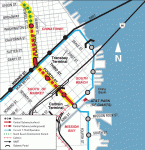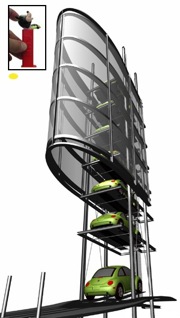SFGate published articles over the weekend on community farming on public land, on making saner lifestyle choices and on planning for a sustainable future in West Oakland. Good stuff!
Community farming
The San Francisco Public Utilities Commission owns a plot of land in the Sunol area of Alameda County and they are renting parcels to farmers who are producing specialty crops including figs, heirloom tomatoes and squash.
Six farmer tenants are currently growing organic crops on the eighteen acre site. Deemed an “agricultural park,” it was proposed in 2006 by Sustainable Agriculture and Education (SAGE), a Berkeley nonprofit. The idea of an agricultural park is to provide “undeveloped plots on the outskirts of urban areas to be used both by small farmers without access to their own land and as public parkland.”
I think it’s a great way to make public land accessible and productive, not to mention being able to teach farming to urban and suburban folks.
The story of why San Francisco own lands in Alameda County (as well as in San Mateo County and in Yosemite) is fascinating in and of itself. Check out Imperial San Francisco (below) for more about how The City ended up with water rights far outside its own land area and built the Hetch Hetchy Damn to provide water and power.
Saner lifestyle choices
The article on saner lifestyle choices advocates less materialism, healthy home life, conservation, community involvement, sustainable landscaping and driving less. In other words, the kind of healthy choices that everyone knows makes a difference, but far too few actually incorporate into their lives.
I’m a huge fan of living in a smaller footprint, using fewer resources and actually thinking about the effects of what we consume. And I really think more folks are catching on to the advantages of simpler and more sustainable choices.
Sustainable planning in West Oakland
An article about the West Coast Green conference highlights a workshop held there to discuss and plan for a sustainable future in West Oakland. West Oakland is just across the bay from San Francisco — literally one BART stop — and is a fascinating area of industrial endeavors and residential properties. Dogged by high crime, West Oakland also shows a lot of potential for planning and development in an urban area struggling to find its future. In 1989 the Nimitz Freeway collapsed there and has been replaced by a wide avenue, providing opportunity for redevelopment and new planning without a monstrous eyesore running through the middle of the community.
From SFGate:
Organized by Oakland’s Ecocity Builders, a nonprofit involved in the theory and practice of sustainable city design, the charrette was to help flesh out a report dubbed “The Sustainable Urban Villages Project.” Ostensibly a blueprint for a sustainable makeover of the area, the report is being funded by a $73,000 grant from the Bay Area Air Quality Management Board. When completed in late 2009, Ecocity will share it with other cities such as Richmond.
Ecocity’s idea for the future of West Oakland, an area surrounded by freeways and streets full of big rigs going to and from the busy Port of Oakland, is to create affordable homes within “urban villages” in the area.
Executive Director Kirstin Miller defines an urban village as a neighborhood about a half-mile long where residents can easily walk or take public transportation to just about any activity – work or school, shopping and recreation. The idea is in keeping with Ecocity’s mission of “thinking through how to re-design cities more for people rather than cars,” Miller said.
Farmer tenants work San Francisco-owned land
Tough times may force saner lifestyle choices
West Coast Green tackles a sustainable future for West Oakland

